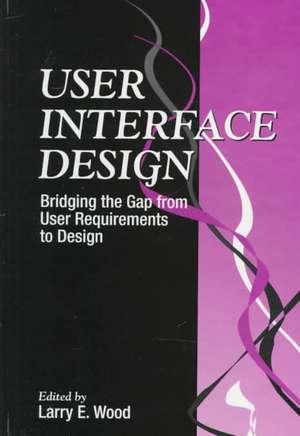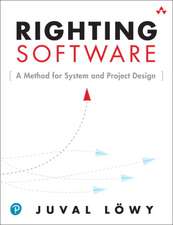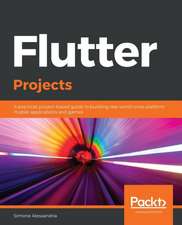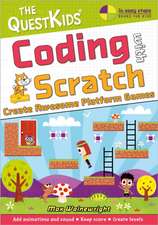User Interface Design: Bridging the Gap from User Requirements to Design
Editat de Larry E. Wooden Limba Engleză Hardback – 2 dec 1997
Preț: 1170.29 lei
Preț vechi: 1462.86 lei
-20% Nou
Puncte Express: 1755
Preț estimativ în valută:
223.94€ • 239.46$ • 186.71£
223.94€ • 239.46$ • 186.71£
Carte tipărită la comandă
Livrare economică 17 aprilie-01 mai
Preluare comenzi: 021 569.72.76
Specificații
ISBN-13: 9780849331251
ISBN-10: 0849331250
Pagini: 320
Ilustrații: 18 tables
Dimensiuni: 156 x 234 x 23 mm
Greutate: 0.76 kg
Ediția:1
Editura: CRC Press
Colecția CRC Press
ISBN-10: 0849331250
Pagini: 320
Ilustrații: 18 tables
Dimensiuni: 156 x 234 x 23 mm
Greutate: 0.76 kg
Ediția:1
Editura: CRC Press
Colecția CRC Press
Public țintă
Academic and Professional Practice & DevelopmentCuprins
Introduction: Bridging the Design Gap, Bridging User Needs to OO GUI Prototype via Task Object Design, Transforming Representations in User-Centered Design, Model-Based User Interface Design, Lightweight Techniques to Encourage Innovative User Interface Design, Interaction Design: Leaving the Engineering Perspective Behind, Mind the Gap: Surviving the Dangers of User Interface Design, Transforming User-Centered Analysis into User Interface: The Redesign of Complex Legacy Systems, Systematic Creativity: A Bridge for the Gaps in the Software Development Process, The UI War Room and Design Prism: A User Interface Design Approach from Multiple Perspectives, Transforming User-Centered Analysis into User Interface: The Design of New-Generation Products
Descriere
Although numerous sources document aspects of user-centered design, there are few references that consider how a designer transforms the information gathered about users and their work into an effective user interface design. This book explains just how designers bridge that gap. A group of leading experts in GUI design describe their methods in the context of specific design projects, and while the projects, processes, and methods vary considerably, the common theme is building a bridge between user requirements and user interface design.























